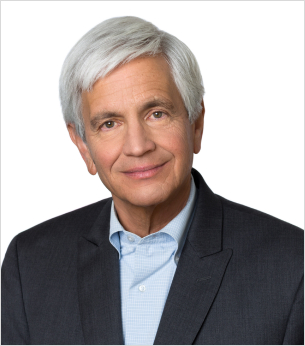As common law doctrines evolve, sometimes their rationale, and proper application, can get lost; that can be because of just one “less than thoughtful” reported appellate decision. One example is an appellate decision in the 1990s limiting the application of the “rescue doctrine” in California. Five years afterwards, another court took a more serious look at the public policy purpose of the doctrine, and got it right. But the two opposing decisions still stand, leaving uncertain, even now, the issue of whether California law permits a rescuer to sue a negligent rescuee.
Under the rescue doctrine, an actor is usually liable for injuries sustained by a rescuer while attempting to help another person placed in danger by the actor’s negligent conduct. The doctrine has been in force in California since at least 1971, when Solgaard v. Guy F. Atkinson Co. (1971) 6 Cal.3d 361, 368 [footnotes omitted] held: “[T]he rescue doctrine varies the ordinary rules of negligence in two important respects: (1) it permits the rescuer to sue on the basis of defendant’s initial negligence toward the party rescued, without the necessity of proving negligence toward the rescuer, and (2) it substantially restricts the availability of the defense of contributory negligence by requiring defendant to prove that the rescuer acted rashly or recklessly under the circumstances.”
Solgaard there cited leading tort texts for the broader rule’s rationale: “The theory which underlies the rescue rule is, in essence, that ‘rescuers, as a class, are always foreseeable when the defendant’s negligence endangers anyone.’ Thus, if defendant creates a situation of peril for one person (the victim), defendant properly may be charged with having proximately caused not only that peril but also the rescue and any injury suffered during its course.” Id.
In 1994, Holland v. Crumb (1994) 26 Cal.App.4th 1844, 1853 peripherally considered a more narrow issue as to application of the doctrine: what if the rescuer is injured while assisting the rescuee, and seeks compensation against her for negligence that brought about her harm? The case concerned a privately employed tow truck driver who brought an action against multiple defendants for personal injuries suffered when he was struck by a car, after arriving at the scene of an earlier accident to tow an inoperable car. The Court of Appeal affirmed the trial court’s holding that the “firefighter’s rule” precluded the tow driver’s recovery, because the risk of being hit from passing traffic is inherent in the performance of the normal and usual duties of a tow truck driver. That part of Holland was later disapproved by the Supreme Court in Neighbarger v. Irwin Industries, Inc. (1994) 8 Cal.4th 532, 545, fn. 4.
Only as an “afterthought” did the Court consider the potential applicability of the “rescue doctrine” to the tow truck driver’s claims against the driver he was rescuing when he got hurt. When the Court did so, it refused to apply the doctrine, offering an inadequate explanation as to why the rescuee was not legally responsible: “In addition, the rescue doctrine by its nature involves more than two persons; it necessarily requires a third party victim placed in peril by the defendant’s negligence. Here, the only persons involved in the “second rescue” were Tufenkian [the negligent victim] and Holland.” Holland’s rationale is questionable at best: if the purpose of the doctrine is to encourage (and provide remedial compensation for) rescuers, why should a negligent actor be exempt from liability just because he happened to be the subject of the rescue? Should not all negligent actors bear legal responsibility for the rescuer’s injuries? Holland, questionable as its logic is, remained the only existing California precedent on this sub-issue of the “rescue doctrine” for five years.
Fortunately, the issue was then more thoroughly pondered and discussed five years later in Sears v. Morrison (1999) 76 Cal.App.4th 577. Right from the start, the opinion noted what was at issue: “The question here is whether an actor is liable for injuries sustained by a person who is trying to rescue the actor from his own negligence. The answer is yes.” Id., at 579, emphasis in original.
The opinion went on to cite texts: “In addition, the leading torts treatises state a duty of care is owed to a rescuer “even when the defendant endangers no one’s safety but the defendant’s own.” (Prosser and Keeton on the Law of Torts (5th ed. 1984) Proximate Cause, p. 308.” Id., at 585.” The opinion went on to consider, and disagree with, the reasoning in Holland, concluding: “Why should the rescuer recover after helping a third party victim of negligence, but not recover for helping the negligent actor? Put another way, why, as a matter of public policy, should the negligent actor be given a shield from liability? [Defendant] Morrison offers no good reason and we see none.” Id. at 589.
Sears and Holland set forth different results, leaving doubt when the issue arises even now, almost twenty years later. The reasoning of Sears makes sense; that of Holland does not. But uncertainty remains, since the opinions are from courts of equal weight. Curiously, the Supreme Court has not encountered the issue in the intervening years.
What is the lesson of this tale about the rationale of the “rescue doctrine?” It can take a long time for jurisprudence to recover from even one thoughtless appellate ruling. A more thoughtful, corrective judicial analysis will hopefully come later, and it will probably win out in the end: but that might take a while.

